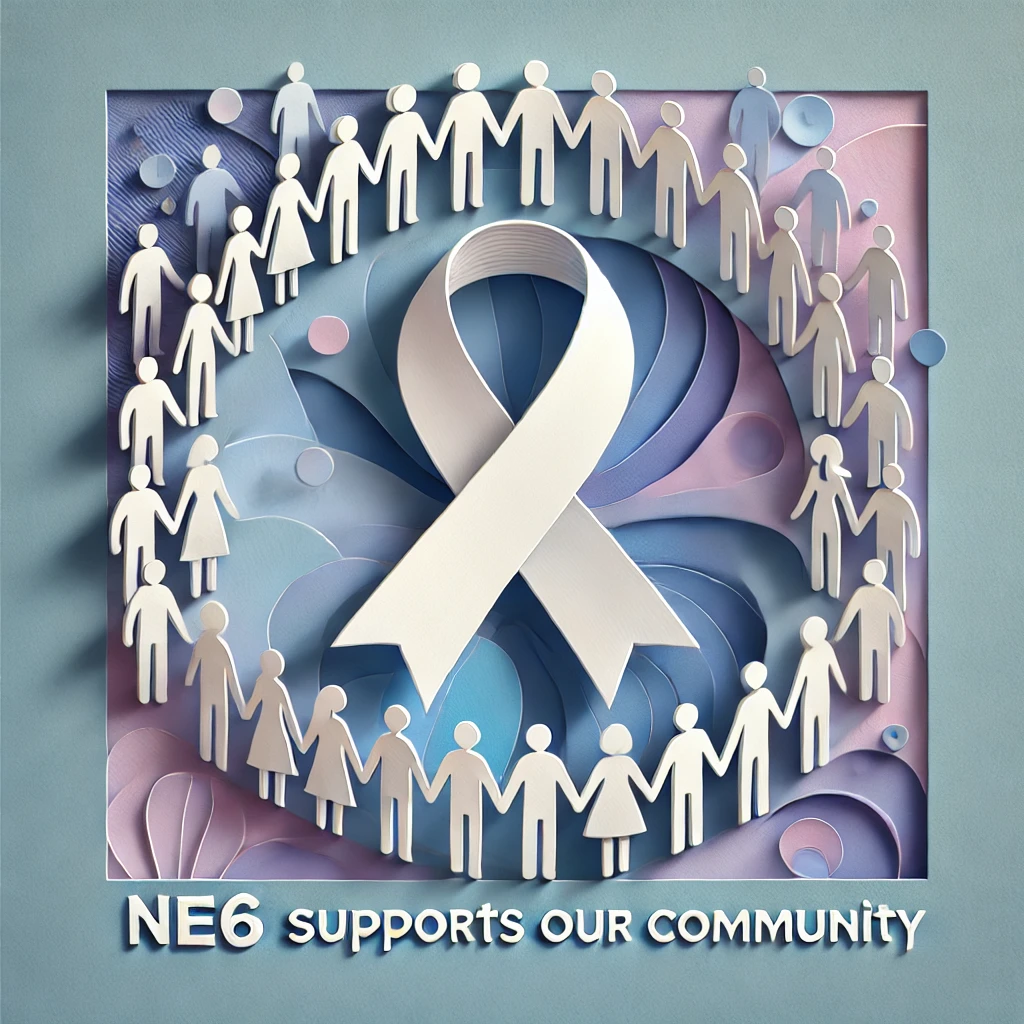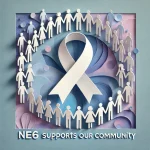September is Overdose Awareness Month: How New England Can Lead the Way
It’s finally September, folks—and if you’re anything like me, you’re ready for some crisp fall air, warm apple cider, and a few apple cider doughnuts. But as we pull out the sweaters and watch the leaves start to turn, there’s something even more important we need to talk about: Overdose Awareness Month.
Now, I know talking about drug overdoses isn’t exactly as fun as apple picking, but the truth is, this month could make the difference between life and death for people in our communities. Whether you live in Boston, Manchester, Hartford, or a small town like Bethel, Vermont, chances are you’ve seen the impact of the opioid crisis firsthand.
This is Overdose Awareness Month, and it’s time for us all to come together as New Englanders. We’re talking about more than just raising awareness—we’re talking about saving lives. So grab yourself a warm mug of cider and let’s dive into why this month matters, how the opioid epidemic has hit our region hard, and what we can do to fight back.
What is Overdose Awareness Month?
First, let’s break down what Overdose Awareness Month is all about. It began back in 2001 in Australia, but it didn’t take long for the movement to spread globally. The goal? To raise awareness about overdoses, reduce the stigma surrounding addiction, and prevent drug-related deaths. Here in New England, that mission is more important than ever.
Consider this: Between 2010 and 2021, more than 70,000 people died from opioid overdoses in the United States, and New England has been hit particularly hard. In 2021 alone, over 2,100 Massachusetts residents lost their lives to opioids. That’s not just a statistic—it’s six families every single day mourning the loss of a loved one. (Source: Massachusetts Department of Public Health – https://www.mass.gov/doc/opioid-related-overdose-deaths-among-ma-residents-november-2021)
But this month isn’t just about statistics. It’s about people—our neighbors, friends, and family members. It’s about breaking down the stigma that surrounds addiction, because the more we talk about it, the better chance we have to save lives.
New England: The Frontlines of the Opioid Crisis
While the opioid crisis has impacted every corner of the United States, New England is unfortunately at the center of it. Whether you’re in a bustling city or a rural town, the opioid epidemic doesn’t discriminate. It has seeped into every facet of life here. So, during overdose awareness month, let’s take a look at how this crisis is unfolding across New England and the steps some states are taking to fight back.
Massachusetts: A Crisis in Numbers
Let’s start in Massachusetts, where the numbers are staggering. In 2021, the state reported 2,290 opioid-related overdose deaths, and a whopping 93% of those deaths involved fentanyl, a synthetic opioid that’s 50 to 100 times more potent than morphine. (Source: Massachusetts Department of Public Health – https://www.mass.gov/doc/opioid-related-overdose-deaths-among-ma-residents-november-2021)
To put that in perspective, Massachusetts has been losing six people every single day to opioid overdoses. That’s six lives lost in a state that prides itself on being a leader in education and healthcare. From the streets of Boston to small towns in Western Massachusetts like Greenfield, the opioid crisis has devastated families and communities.
To combat this crisis, Massachusetts has ramped up its Narcan (naloxone) distribution programs. Narcan is a life-saving drug that can reverse the effects of an opioid overdose in minutes. Thanks to statewide programs, Narcan is now available in pharmacies without a prescription, and first responders have been trained to carry and administer it. In 2020 alone, Narcan was used over 3,000 times by Boston EMS to save lives. (Source: Boston Public Health Commission – https://www.bphc.org)
New Hampshire: A Tough Fight for a Small State
Next, we head north to New Hampshire, a state that has consistently ranked as one of the hardest-hit states in the opioid epidemic. With a population of just over 1.3 million, the numbers are stark: over 400 people died from opioid overdoses in 2021. That’s a rate of one person every day—and in a state this small, that’s devastating. (Source: NewHampshire Department of Health and Human Services – https://www.dhhs.nh.gov/omh/narcan/documents/factsheet.pdf)
In Manchester and Nashua, two of the state’s largest cities, the crisis has spurred innovative community responses. The Safe Stations program allows anyone struggling with addiction to walk into a fire station and get immediate help—no questions asked. Since 2016, more than 6,000 people have used this program to get connected with recovery resources. It’s been a game-changer for New Hampshire’s response to the opioid epidemic. (Source: Manchester SafeStations – https://www.manchesternh.gov)
Vermont: Pioneering the Hub and Spoke Model
In Vermont, the opioid crisis has led to the development of the Hub and Spoke model, a system designed to provide comprehensive addiction treatment. In this model, the “hubs” are regional centers that specialize in treating opioid addiction with medications like buprenorphine and methadone, while the “spokes” are local doctors and healthcare providers who offer ongoing care. This system ensures that people have access to continuous support in their recovery journey. (Source: Vermont Department of Health – https://www.healthvermont.gov)
Despite these efforts, the state saw a 33% increase in opioid deaths between 2020 and 2021, with 88% of those deaths involving fentanyl. The rise of fentanyl has turned Vermont’s opioid crisis into a deadly game of Russian roulette, with users often unaware that their drugs are laced with this potent substance. (Source: Vermont Department ofHealth – https://www.healthvermont.gov)
Maine: Fighting the Epidemic in Rural Communities
In Maine, the opioid epidemic has spread into rural communities, making it even harder to combat. With a population spread across the largest state in New England, many Mainers have limited access to healthcare, making addiction recovery a difficult journey. In 2021, Maine saw 636 overdose deaths, marking a 22% increase from the previous year. (Source: Maine Department of Health and Human Services – https://www.maine.gov/dhhs)
One bright spot has been the state’s focus on Medication-Assisted Treatment (MAT) programs, which use FDA-approved medications like buprenorphine and methadone to treat opioid addiction. In 2021, more than 4,200 people in Maine were enrolled in MAT programs, offering a path to recovery for those struggling with opioid use disorder. (Source: Maine Department of Health and Human Services – https://www.maine.gov/dhhs)
Rhode Island: Leading in Overdose Prevention
Despite being the smallest state in the nation, Rhode Island has become a leader in overdose prevention efforts. In 2021, the state reported 435 opioid overdose deaths, but Rhode Island’s innovative harm reduction strategies have been making a difference. (Source: Rhode Island Department of Health – https://health.ri.gov)
One of the most successful initiatives is Rhode Island’s Prevent Overdose RI program, which provides real-time data on overdoses and connects individuals to local treatment resources. The state has also expanded its Narcan access programs, making the life-saving drug available at no cost to those at risk of overdose. Additionally, Rhode Island has been a national leader in providing treatment to incarcerated individuals, ensuring that those struggling with addiction receive care even while behind bars. (Source: Prevent Overdose RI – https://preventoverdoseri.org)
Connecticut: The Overdose Epidemic in Urban Centers
Connecticut, home to cities like Hartford, Bridgeport, and New Haven, has seen opioid-related overdose deaths skyrocket in recent years. In 2021, 1,374 people died from opioid overdoses, an 11% increase from 2020. Most of these deaths involved fentanyl, and like the rest of New England, Connecticut is grappling with how to get this crisis under control. (Source: Connecticut Department of Public Health – https://portal.ct.gov/DPH)
In response, Connecticut has ramped up its Overdose Action Plan, which focuses on increasing access to Narcan, expanding treatment programs, and providing education to both healthcare providers and the public on the dangers of fentanyl. The state has also been working to distribute fentanyl test strips, allowing users to test drugs for the presence of fentanyl before using them. This harm reduction strategy is already showing promise in reducing overdose deaths. (Source: Connecticut Department of Public Health – https://portal.ct.gov/DPH)
How Did We Get Here? A Look at the Opioid Crisis Origins During Overdose Awareness Month
If we’re going to tackle this epidemic, we’ve got to understand how we got here in the first place.
The Role of Prescription Drugs
The opioid crisis didn’t just appear overnight. It started in the 1990s and early 2000s, when opioids like OxyContin were widely prescribed by doctors across the country—and especially here in New England. These drugs were marketed as safe, with a low risk of addiction. However, that turned out to be far from the truth.
Studies show that 21% to 29% of patients prescribed opioids for chronic pain misuse them, and 8% to 12% develop an opioid use disorder. (Source: National Institute on Drug Abuse – https://nida.nih.gov)
In New England, this over-prescription was particularly prevalent in rural areas where access to healthcare was already limited. In places like Northern Maine and Western Massachusetts, the opioid prescription rate was significantly higher than the national average. Workers in industries like fishing, logging, and manufacturing, where injuries are common, were often prescribed opioids to manage pain. Over time, many of these people became dependent on the drugs.
The Rise of Heroin and Fentanyl
As doctors began to cut back on opioid prescriptions in the 2010s, people turned to cheaper, more accessible alternatives like heroin. But it wasn’t long before a new, even deadlier substance hit the streets: fentanyl.
Fentanyl is a synthetic opioid that is 50 to 100 times more potent than heroin, and it has become the leading cause of opioid overdoses in New England. In fact, in Massachusetts, fentanyl was involved in 93% of all opioid-related deaths in 2021. (Source: Massachusetts Department of Public Health – https://www.mass.gov/doc/opioid-related-overdose-deaths-among-ma-residents-november-2021)
What You Can Do to Help
Overdose Awareness Month isn’t just about looking at the grim statistics—it’s about taking action. And here’s the good news: there’s plenty you can do to help, whether it’s educating yourself, supporting local initiatives, or taking direct action to save lives.
1. Learn the Signs of an Overdose
If you’re going to help, the first step is knowing how to recognize the signs of an opioid overdose. Here are the key signs:
- Slow, shallow, or stopped breathing
- Blue or gray lips and fingernails
- Unconsciousness or unresponsiveness
- Gurgling or choking sounds
When in doubt, call 911 immediately and administer Narcan if available.
2. Carry Narcan (Naloxone)
Narcan is a life-saving drug that can reverse an opioid overdose in minutes. Many states, including Massachusetts and Rhode Island, allow you to get Narcan at your local pharmacy without a prescription. Learning how to administer it and keeping it with you could save a life.
Narcan is available for free in some areas through programs like Rhode Island’s Narcan Distribution Program. (Source: Rhode Island Department of Health – https://health.ri.gov)
3. Support Local Organizations
There are many amazing organizations across New England that are doing incredible work to fight the opioid epidemic. Consider donating your time or money to one of these organizations:
- Learn to Cope (Massachusetts): A peer-led support network for families affected by addiction. They provide education, support, and Narcan training. (Source: Learn to Cope – https://www.learn2cope.org)
- The Anchor Recovery Community Center (Rhode Island): Anchor Recovery provides support for people in recovery and offers resources for staying clean. (Source: Anchor Recovery – https://www.anchorrecovery.org)
4. Start the Conversation
One of the most powerful things you can do is simply talk about it. Addiction thrives in silence, so let’s break that silence. Have conversations with your family, friends, and neighbors about the dangers of opioids, the resources available, and how to get help. The more we talk about it, the more we can reduce the stigma—and the more lives we can save.
Looking Forward: The Future of Overdose Prevention in New England
While the opioid crisis is still an urgent problem, there is hope. New England is home to some of the most innovative public health strategies in the country, and there are new solutions on the horizon that could help turn the tide.
Safe Injection Sites
There’s been a lot of discussion about opening safe injection sites in places like Massachusetts and Rhode Island. These sites provide a supervised environment for people to use drugs, with medical staff on hand to prevent overdoses and offer treatment options. Although controversial, safe injection sites in other countries have been shown to reduce overdose deaths and connect more people to recovery services. (Source: Massachusetts Department of Public Health – https://www.mass.gov)
Research and Innovation
New England’s world-class universities are leading the charge when it comes to addiction research. At Harvard Medical School, researchers are studying new treatments for opioid addiction, including medications like buprenorphine and methadone. Over at UMass Amherst, scientists are investigating the connections between mental health and addiction, which could lead to better treatment approaches in the future. (Source: Harvard Medical SchoolAddiction Research – https://www.health.harvard.edu)
Johnny’s Call to Action
Alright, New England, here’s where we’re at: the opioid crisis is hitting us hard, but we’re a resilient bunch. Overdose Awareness Month is a chance for all of us to step up, take action, and make a real difference in our communities.
Whether it’s learning how to use Narcan, volunteering at a local organization, or just talking to someone you love about the dangers of addiction, we all have a role to play. The road ahead is tough, but together, we can turn the tide on this crisis.
So this September, let’s roll up our sleeves and get to work. Let’s make sure we’re doing everything we can to save lives, support recovery, and make New England a safer, healthier place for everyone.
Let’s make a difference, New England.


















Leave a Reply